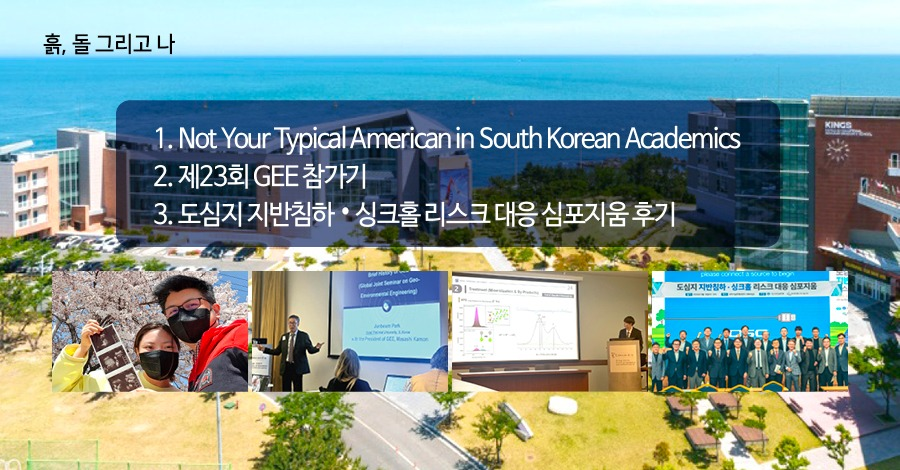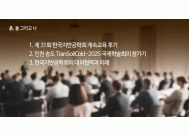Not Your Typical American in South Korean Academics
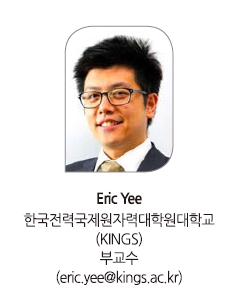
From what others have told me, I am a bit of an anomaly in South Korea: American with a Cantonese background serving as an Associate Professor at a graduate school in Ulsan since 2013 and married to a lady from Busan who I met in Seoul. Does sound a bit chaotic doesn’t it? What makes it even more interesting is that I still don’t know Korean even though I’ve been here since 2012. I guess it would be a good idea to describe how things ended up the way they did for me and my overall experiences in South Korea.
Before I continue, I would like to place a disclaimer that the views and opinions expressed in this article and its contents are solely those of the author and do not necessarily reflect the views or positions of any entities involved with this publication, representatives, employers, and affiliates. I do not endorse or take responsibility for any content shared by readers or third-party users.
To start, I grew up in the decade when the internet just started, Nokia introduced their cell phones, and Sony was a powerhouse. Even though I hated academics and volunteering, I was fortunate to be accepted into the University of California, Berkeley (Cal) and got a Bachelors in Applied Mathematics, which was basically code for “couldn’t get into Computer Science, but all my coursework is in programming”. I think I graduated with a GPA of 2.7, not sure, but definitely below 3.0. To this day, I am still shocked at the amount of homework I copied during my undergraduate studies. This always led me to wonder, should I have studied more or partied more? I definitely should have picked one instead of averaging it out.
Ended up working in accounting and information technology, wanted to make a career change and got my Masters in Civil Engineering from California State University, Los Angeles (CSULA). This time, I let many people copy my homework. Even though many people make fun of the California State University system, I was glad I went. I was able to experience a teaching-oriented environment and made the best of it. It was very practical and focused more on real-world situations. My advisor, Professor Mark Tufenkjian, was tall, articulate, tactful, and to my surprise famous in the professional community. Under his tutelage, I was able to hone my writing skills, which I felt I always had as my father made me write so many book reports as a child, or perhaps this skill is another of my many illusions of grandeur? Surprisingly, I decided to do a research project instead of testing to get my Masters.
After my Masters I got a job at a local engineering firm doing design and construction support. I met many people in construction, loved the industrial drama, and was able to conduct business development, i.e. get projects. Was also able to get my Professional Engineer license. While visiting my Masters advisor one day, I talked about what my next steps should be and he literally got me into the Ph.D. program at the University of California, Los Angeles (UCLA). My doctoral advisor was Professor Jon Stewart, a genius in the field of earthquake engineering and also tall. Looking back, Jon was very tolerant of me and my peculiar ways. Even though I was probably his worst student, he gave me good advice, such as never writing emails when angry, being meticulous, don’t be famous by putting others down, and mentioned a successful professor is a professor that finds money for his students. I am sorry to say I did not heed any of his valuable advice when I moved to South Korea.
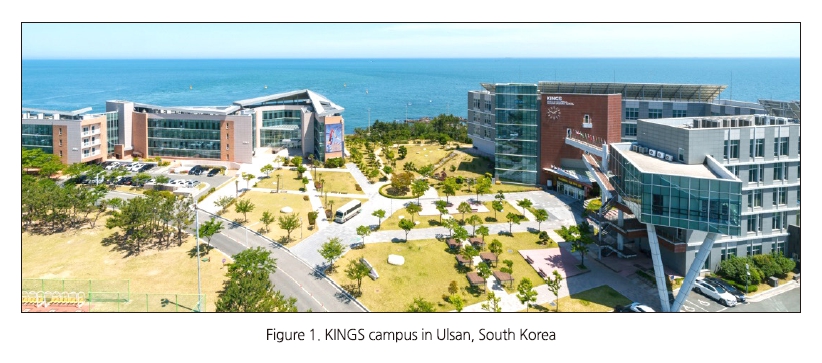
My original purpose to come to South Korea was to interview at South Korea’s largest C&T company (not hard to imagine which one), at the advice of their recruiting team when they visited UCLA. While waiting for the interview schedule, I was at Hanyang University, Seoul campus, under the BK21 program, which was an eye-opening experience. During that time, I met many struggling students and post-docs across Seoul, and witnessed situations described by traditional engineering ethics courses, such as envelopes under the table. Please don’t get me wrong, I was more surprised the weird dilemmas described in engineering ethics textbooks actually existed than anything else. Luckily, when the time came, I was able to interview at South Korea’s largest C&T company. I interviewed at the Gangnam office by 6 department heads, who explained the role available to me and that the company would want me to relocate to projects in the Middle East. When I heard that, I knew it would not be a good match. That was that. I told my then girlfriend that I would return to the U.S. for an engineering or consulting job if I could not find a job in South Korea within the next few months. She connected me to people at KEPCO International Nuclear Graduate School (KINGS). KINGS was a small graduate school in the southern tip of Ulsan founded by the Korean nuclear industry with key people like Dr. Chung Keunmo. The campus is shown in Figure 1. KINGS focused on fostering professionals in and into the nuclear power plant engineering life cycle. One of the tenets of the KINGS practice-oriented curriculum was an emphasis on teaching rather than publishing, projects over research, and everything was conducted in English, which I found attractive. I’ve met too many professors with a million journal papers and a thousand books whom no one remembers. I didn’t want to whittle away like them. In my inexperienced opinion, higher level quantitative indicators are not a good metric for higher level academics. To be honest, I only learned of these quantifications when I came to South Korea. U.S. does not officially use them. Unexpectedly, KINGS liked my experience, my qualifications, and my interviews were successful. I started as an Assistant Professor in 2013. Suffice to say, becoming a professor was more luck and fate than diligence or talent.
However, bizarre circumstances demand peculiar environments, or is it the other way around, or did I just make that up? You see, the employment contract at KINGS was for a duration of 3 years, extended another term of 3 years if certain criteria were satisfied. Guess what? There were minimum requirements on the number of journal publications. Many faculty had trouble because well... if your background is from practice, publishing application-oriented papers in English is going to be difficult. Another condition was the amount of research funding faculty brought in. As a foreign national with no Korean skills, this was impossible, or as some people like to say, “difficult”. From what I understand, the National Research Foundation of South Korea hires proposal reviewers considering certain conditions. One of them is that reviewers cannot come from the same schools as the principal investigator. Since I graduated from Cal, CSULA, and UCLA, who are eligible to review me? Moreover, many of the reviewers aren’t strong in English and require resultant reports and presentations be conducted in Korean. This is challenging for expats. Others have said to join a research team and I have tried, but as mentioned earlier, I’ve experienced ethical issues and broken relationships by being on such teams. From my understanding, most academic institutions in South Korea have similar faculty evaluation criteria and systems. To be honest, I am not against this. It just makes it hard to retain foreign nationals as professors for institutions like KINGS. Adjunct professorship with eternally continuous associate professorship requirements. Can’t make this stuff up. Moreover, as a foreign national, I was ineligible for tenure at KINGS which I found out later, but the founders made up for it by scaling remuneration differently. I would also find out several benefits would not be available to me. No doubt it’s a stressful environment and to be honest there was no way I could have survived this long at KINGS without the generosity and help of the faculty and staff at KINGS. I am grateful.
I am a little detailed here because I want the atypical reader to know what it’s like to pursue and retain a faculty position in South Korea as an expat. It is difficult. It is extremely difficult. I imagine it will be somewhat similar with more traditional schools. With term-limited contracts, conditions will change or reset. In my case, salaries have reduced to the point where a similar position in the U.S. would pay more. Additionally, contract extensions at 60 years old do not look attractive or even feasible. Live long as a poor expat, or a be a mediocre salaryman. Yes, there are many benefits, but also many drawbacks. So nave professor beware.
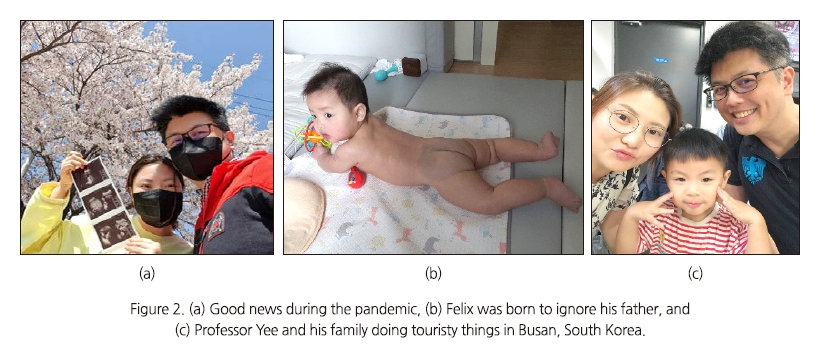
When I first started my faculty position, I tried to settle down and start a family. The first step was learning Korean. It was difficult. I was not young, not language-oriented, had selective hearing, and had to stay up-to-date in my profession with no memory left for Korean vocabulary. Some experienced American teachers advised me not to spend too much time on Korean because it isn’t used outside of Korea and they insinuated all expats eventually leave. The rural location of KINGS did not help with life improvement either. Luckily, the Korean students and faculty at KINGS were kind and tried to set me up on blind dates and got me registered on dating services that would accept an expat. None of the those worked out. I moved to Busan. Fortunately, a bright student registered me on a mobile app called SKY People and coached me on how to communicate using such apps. Through many trials and tribulations, I connected with a pretty lady from Seoul who spoke English while I was in Los Angeles around 2017? We got married several years later in 2019, right before the COVID pandemic. In 2022, we had a son, Felix Yee (Figure 2a-b). It’s been sleepless nights ever since. Figure 2c shows the sleepless happiness with the most beautiful boy in the world.
One question the local citizenry usually asks is why I didn’t look for an American girl? To be honest, I was looking for a life partner that shared similar interests, wasn’t too different culturally, socially, and mentally. And yes, someone physically attractive. As many people can see, most foreign nationals in South Korea are involved in the American military or in the English as a Second Language (ESL) trade. There are surprisingly few overlaps in the American military, ESL, and engineering faculty circles of coastal Gyeongsang Provinces. One thing I noticed is that the few foreign nationals that are staying in the Gyeongsang areas tend to spend their time in the great outdoors (or they are just plain bored). I on the other hand do not enjoy the great outdoors. I like city-life, I enjoy sophistication, I appreciate diversity of service, I want to see beautiful people. Looking at fugly people is a mental health killer.
This is why I like Seoul. I like how Seoul is a real metropolis, including areas around Gyeonggi province and Incheon. I don’t like the high cost of living Seoul mandates, but “pay to play”. The second biggest city, Busan, is also good, but the surrounding areas, South Gyeongsang province and Ulsan, are mostly rural and the population density just isn’t large enough for modern success. Interestingly, Busan, Ulsan, and South Gyeongsang province are collectively and colloquially referred to as South Gyeongsang around here. The other cities in South Korea just don’t cut it. Additionally, I personally find it strange and discouraging that the national government continues to implement an archaic plan of population redistribution (i.e. Trail of Tears, Transatlantic Slave Trade, Syrian Refugee Crisis, The Great Leap Forward). One reason I don’t like it is because it is government mandated as opposed to market evolution, reminiscent of socialist practice. Another reason I disagree with this socialist directive is it will not accomplish its goal. Deporting agencies from Seoul (or anywhere) to the countryside only separates families, with two notable side-effects. One is that the father or husband usually ends up finding a local girl to have an affair with. Loneliness is deadly. I’m not sure if this side effect was purposely implemented to help increase the dwindling population. The other is that transportation availability becomes limited because everyone wants to go back to Seoul on the weekends. The idea that new families are going to stay in these satellite areas and bring economic development is misleading. These areas are geographically and/or demographically unattractive to begin with, so there aren’t real reasons to stay. There is a saying, don’t bring food to the starving village, move the starving village to the food. I think I made that up too.
Which brings up another point I find interesting about my experiences in South Korea. A few years ago, a certain President with 41% of the national vote, decided to reduce the contribution of nuclear power to the nation’s energy mix by phasing out civilian nuclear power infrastructure. The nuclear power industry in South Korea is a huge success, along with cosmetic surgery and kpop. In fact, nuclear power is the only sector South Korea can compete in against the global super powers. So I was baffled when several departments of government supported closing older nuclear reactors. That initiative made little sense as older nuclear reactors are generally treated as free electricity. It’s ironic because the President before 41% was removed from office due to manipulation concerns. This nuclear phaseout policy had devastating effects on the community I was working in. The village of Wollae relied on local nuclear power plant staff and support personnel for business. Due to the nuclear phaseout implementation, many businesses in Wollae disappeared. The number of shop vacancies was stunning. It was brutal. Even KINGS was affected. So I found it strange that even though the national government wanted to support rural communities through forced displacements, they chose to destroy a relatively successful rural community; and for what? Solar and wind power? Scientifically, those will never be successful in mainland South Korea. Engineering also points to the science. Even the sun and wind point to the science. The good news is that the village of Wollae and the surrounding communities somewhat recovered after the nuclear phaseout plans were partially lifted due to unpopularity, with coffee tourism taking the lead. Figure 3 shows me on a 2017 date with my future wife at a famous caf´e in Gijang, Busan. I understand there is some apprehension with the current President, fears that he will be a detrimental force to the nuclear power industry. Hopefully the administration will understand how good the nuclear power industry has been and will be to South Korea, but time will tell.
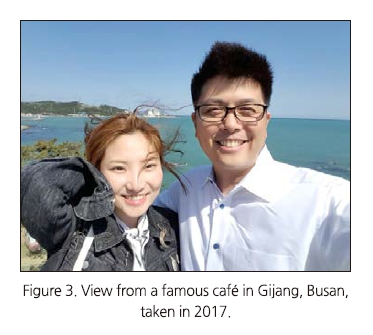
There are so many things I want to talk about, but I guess that would be for another day. While writing this, I have to admit, my path into higher level academics is a strange one. It was only made possible through the generosity of others. I hope this generosity continues and grows. Living in South Korea as an expat has been difficult. I was extremely blessed to find a wife that loves food as much as I do and we were able to start a family in turbulent times. I don’t think my life is a good framework for getting into academics or living as an expat, but it does outline the diversity of challenges expats can face.
제23회 GEE 참가기
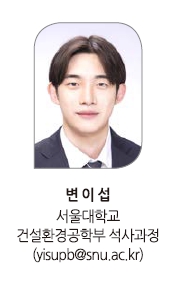
국제 학술대회 “GEE”(Geo-Environmental Engineering) 소개
이번 “GEE 2025”가 캐나다 몬트리올의 Con-cordia University에서 5월 21일~23일에 개최되었다. 개회식에서 서울대 박준범 교수는 GEE의 상세한 역사와 그동안의 발전 과정을 자료 화면과 함께 소개했다.
2001년, 서울대 박준범 교수와 교토대 Masashi Kamon 교수를 주축으로 한·일의 젊은 연구자들이 가진 학술모임이 GEE의 출발점(제1회)이다. 이 행사는 연례로 이어지며 점차 규모를 확장해나갔다. 제6회(2006)부터 유럽권 대학교가 전격적으로 참여하면서 국제 세미나로 발돋움하였고, 2007년 개최지가 프랑스 그로노블로 선정되면서 아시아-유럽권 대학의 학술 교류가 본격화되었다. 제8회(2008)부터는 북미권 대학이 참여하기 시작했다. 이듬해인 2009년 개최지가 캐나다 밴쿠버로 선정되면서 명실상부한 국제 학술대회의 성격을 갖추게 되었다. 특히 학회 세션은 점차 세분화되고 전문화되었으며 전통적인 지반환경 분야뿐만 아니라, 연관된 유망한 분야까지 아우르는 폭넓은 주제들이 다루어지게 되었다. 이후 참여 대학들이 매년 번갈아가며 개최지를 맡으며, 각 대륙의 거점으로서 GEE를 유지하고 발전시키는 역할을 해왔다. 그 결과, GEE는 유럽-북미-아시아 간의 학문적 교류뿐만 아니라 문화적 교류의 장으로 자리 잡았으며, 지반환경 분야의 최신 연구 동향과 성과를 볼 수 있는 국제적인 네트워크로 발전하게 되었다. 올해 2025년, GEE는 제23회를 맞이했고, 캐나다 몬트리올에서 성공적으로 개최되었다.
GEE의 중요한 특징 중 하나는 학술 프로그램 진행 후, 둘째 날에는 지반환경 관련 현장을 직접 방문하는 Technical Trip을 통해, 학문과 현실의 접점을 체험할 기회를 제공한다는 점이다. 이를 통해 학생들은 자신이 배우는 지반환경공학의 적용을 직접 확인하며, 학문적 애정을 키워가는 계기를 마련해왔다. 또한, 긴장감이 감도는 Technical Session과 달리, Technical Trip에서의 교수진과 대학원생들은 더욱 자유롭고 편안한 분위기 속에서 교류할 수 있다. 이처럼 GEE는 연구 발표의 장을 넘어, 차세대 연구자들이 지반환경 분야에 대한 애정을 품고, 학술·문화적 소통을 할 수 있는 국제 컨퍼런스(Conference)로 자리 잡아왔다.
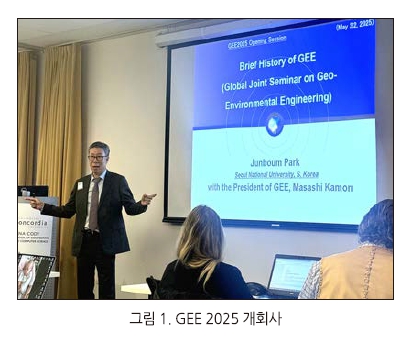
GEE 2025의 기조
이번 GEE 2025의 기조(Key-note) 연설은 캐나다 상원의원 Rosa Galvez가 맡았다. 주요 내용은 표 1과 같다.
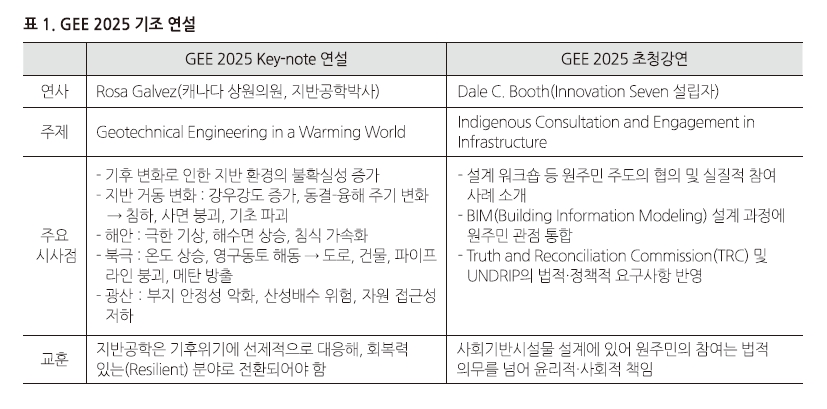
GEE 2025 참가 소감
학회의 가장 중요한 부분인, Technical Session은 ① Climate Change, ② Leaching, ③ Remediation, ④ Geosynthetic Liners, ⑤ Ground Improvement, ⑥ Simulations & Modeling의 6개 하위 세션들로 구성되었으며, 총 49편의 논문이 발표되었다. 나는 이 중 Remediation Session에서 발표를 진행했다. 나는 “기계화학적 공정을 통해 PFAS(과불화화합물) 오염토를 정화하고, 이 과정에서 발생하는 부산물과 토양의 공학적 특성 변화”에 대해 연구했다. 같은 세션에 PFAS 정화를 다루는 팀이 두 팀 더 있어, 동일한 오염물질을 주제로 연구했다는 점에서 더욱 긴장감을 느낄 수밖에 없었다. 발표를 마친 후에야 긴장이 풀리면서, 다른 참가자들의 발표를 차분히 들을 수 있었다.
세션들은 각 좌장(Chair)이 주관하여 진행하고, 논문의 전반적인 내용과 발표의 전달력, 질의응답 능력을 종합적으로 평가한다. 이를 통해 좌장들은 우수 발표자를 선정하게 되며, 최종 수상자는 시상식에서 공개된다. 호명된 수상자는 단상에 올라 상장과 상금을 수여받는다.
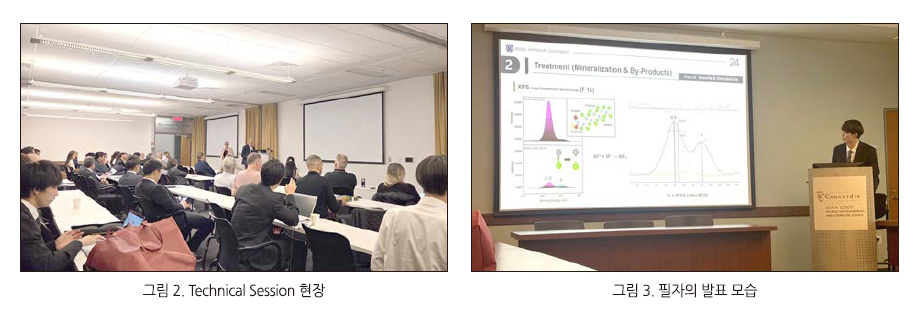
영광스럽게도 나는 이번 GEE 2025에서 “Best Paper Presentation Award”를 수상했다. 작년 GEE 2024(제22회, 교토)에서는 대학원 첫 학기로서 부족한 점이 많았지만, 지난 1년 동안 연구자로서, 인간적으로도 한층 성장해 다시 돌아올 수 있었던 것 같아 뿌듯했다. 특히, 상금을 후원해주신 한국지반공학회(KGS)와 KGS 황영철 회장님께 깊은 감사를 드리며, 나를 비롯한 모든 수상자들이 큰 영예로 생각하고 있다.
그리고 시상식에서 알게 된 사실이지만, 서울대학교 학부생 팀이 Poster Session에서 수상하게 되었다는 소식을 듣고 기뻤다. 그렇게 학술대회는 조직위원장인 Catherine Mulligan 교수님의 폐회사를 끝으로 막을 내렸다.
다음날, Technical Trip이 진행되었다. 몬트리올 북부에 위치한 “Biogenie(Ortec Group)”라는 토양오염 처리 전문 기업이었다. 해당 현장은 캐나다 전역에서 발생하는 다양한 오염토를 모으는(ex-situ) 대규모 복합 처리시설로, 열처리, 생물학적 처리 등의 공정이 운용되고 있었다. 관계자들로부터 시설의 운영 방식과 처리 기법에 대한 설명을 들으며, 이론으로만 접하던 토양복원 기술이 실제로 어떻게 대규모(field-scale)로 적용되고 있는지를 직접 눈으로 확인할 수 있었다. 처리된 흙은 복토재(backfill)나 골재로 재활용된다. 그림 4는 굴착기를 통해 하부 지반을 공기에 노출시켜 중금속의 미생물 반응을 촉진시키는 작업을 나타낸다.

특히, 야외에 적재된 오염토는 기상과 날씨의 변화, 계절, 자연환경의 영향에 그대로 노출될 수밖에 없는데, 이러한 모든 시나리오에 대비한 공정 운영 매뉴얼이 체계적으로 마련되어 있다는 점이 인상적이었다. Lab-scale 연구를 수행하는 학생으로서, 현장의 가혹한 조건과 공학적 변수를 최대한 고려한 정밀한 실험 설계만이 Scale-up과 현장 적용에 유의미한 기여를 할 수 있다는 점을 깨달았다.
맺음말
그렇게 학술대회를 마치고 한국에 돌아왔다. GEE 2025를 돌아보며, 나는 그 기억을 정리했다. 다시 각자의 자리로 돌아가, 본연의 공부와 연구를 이어가고 있을 대학원생들에게 축복이 있기를 바란다. 그리고 이번 학회에서 경험하고 얻은 정보들, 그리고 배움과 감정들을 잊지 않고, 앞으로의 삶에 담아내며 살아가고 싶다.
우리 연구실 출신인 인하공전 곽창원 교수님은 대학원생 시절부터 현재까지 GEE에 참여하고 계시며, 지금은 GEE를 지원하는 역할도 하신다. 곽 교수님의 모습을 보며, 나 또한 언젠가 관련 분야에 몸담아 지속적으로 GEE의 발전과 계승에 기여하는 사람이 되고 싶다는 생각을 하게 되었다.
다시 한 번 한국지반공학회의 도움에 감사합니다. 또한, 내년에 진행될 GEE 2026(제24회, 프랑스 루앙)에도 회원들의 많은 관심과 참여를 부탁합니다.
도심지 지반침하·싱크홀 리스크 대응 심포지움 후기
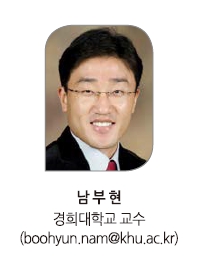
1. 시작하며
최근 도심지에서 지반침하 및 싱크홀 사고가 빈번히 발생하면서 국민의 불안감이 증대되고 있다. 이에 따라 사고를 사전에 예방하고자 하는 기술적, 제도적 접근에 대한 사회적 요구도 높아지는 상황이다. 한국지반공학회는 이러한 시대적 흐름에 발맞추어, 한국토질및기초기술사회와 공동으로 「도심지 지반침하o싱크홀 리스크 대응 심포지움」을 개최하였다. 이번 심포지움은 도심지 내 지반침하와 싱크홀 사고의 발생 원인을 다각적으로 조명하고, 실효성 있는 예방 기술과 정책 개선 방안을 논의하는 자리로 마련되었다. 지반공학, 구조공학, 원격탐사, 도시계획 등 다양한 분야 전문가들이 발표 및 토론에 참여하여 학제 간 협력의 중요성을 다시금 부각시켰다.
2. 심포지움 내용
이번 심포지움은 기조강연을 포함한 두 개의 세션과 종합토론으로 구성되었으며, 학계·연구계·산업계·공공기관 전문가들이 폭넓게 참여하였다. 기조강연에서는 고려대학교 이종섭 교수가 싱크홀 발생 원인과 복구 기술을 고찰하고, GPR, 음파탐사 및 AI 융합 기술의 적용 가능성에 대해 발표하였다.
제1세션에서는 지반침하의 원인 분석과 사전 예방 전략이 중심이 되었다. 지온이앤씨 이용선 대표는 설계·시공·계측 전반에 걸친 구조적 문제를 지적하며 대가기준의 현실화를 강조하였고, 건설기술연구원 강재모 연구위원은 디지털 지하정보를 활용해 땅꺼짐 사고의 위험을 예측하 기 위한 기술, 지하시설물 건전성 평가를 통해 개량 의사결정을 지원하는 기술, 스마트 센서 기반 지하안전 감시 기술을 소개하였다. 서울연구원 김정환 연구위원은 서울시 내 지반침하 발생 통계와 사례를 바탕으로, 차량형 GPR을 활용한 위험 지역 탐사, 실시간 계측망 확대, 우선 정비구역 분석 모델 등을 통해 서울시의 예방 체계를 소개하였다. 마지막 발표자 국토안전관리원 허춘근 실장은 국토교통부의 ‘굴착공사장 안전관리 강화방안’ 및 ‘제2차 국가지하안전관리 기본계획’의 추진 내용을 중심으로, 굴착공사 단계별 안전관리, 지하안전관리 신뢰도 제고 방안, 사고조사위원회 결과 기반의 정책 연계 사항 등을 발표하였다.
제2세션에서는 기술 기반의 대응 방안이 집중 조명되었다. 경희대학교 남부현 교수는 인공위성 원격탐사SAR(합성개구레이더) 기술을 활용한 도심지 광역지역 지반침하 위험 모니터링 방안을 소개하며, 도심 안전관리체계 고도화 가능성을 제시하였다. 지오엑스퍼트그룹 정재호 대표는 지하수 변동에 의한 침하를 제어하기 위한 터널 방수설계 및 시공 대안을 발표하였으며, 홍익대학교 김태식 교수는 UGV 기반 컴퓨터 비전 기술을 활용한 변위 정량화 기법을 공유하였다. 명동엔지니어링 고명상 대표는 지하안전평가 제도의 실효성 및 한계 분석을 바탕으로, 실무 적용 과정에서의 문제점을 짚고 설계·시공 단계에서 반영 가능한 대책들을 제시하였다. 이어 한국기초 김용현 대표는 지반 그라우팅 공법의 시공관리 기법을 중심으로 정밀시공의 필요성과 관리 방안을 제시하였다.
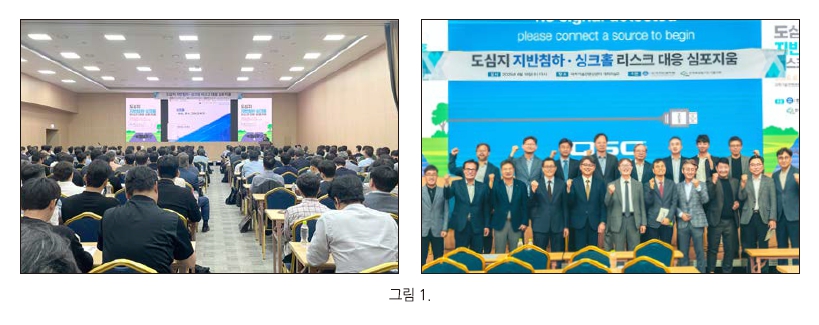
종합토론에는 박두희 교수(한양대), 최창호 박사(건설기술연구원), 윤희정 교수(홍익대) 등이 참여하여 도심지 지반침하 대응을 위한 기술 표준화, 제도 개선, 데이터 기반 모니터링 시스템 구축의 중요성을 강조하였다.
3. 맺음말
이번 심포지움은 지반침하·싱크홀 문제의 원인을 구조적으로 분석하고, 예방 중심의 기술 및 제도 개선 방향을 통합적으로 논의하였다는 점에서 의의가 크다. 특히 인공위성 원격탐사, GPR 탐사, 스마트 센서 등 최신 기술의 활용 가능성과 현장 적용 방안에 대한 실증적 논의는 향후 정책 수립과 기술 개발에 유의미한 시사점을 제공하였다.
한국지반공학회는 앞으로도 학술·산업계 간 연계를 강화하고, 지속적인 연구와 논의를 통해 국민의 생명과 재산을 보호하는 지반안전 확보에 앞장설 예정이다.
